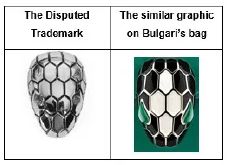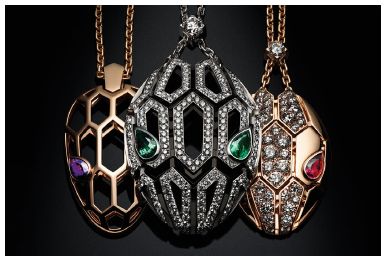Bulgari (stylized as BVLGARI) is an Italian luxury brand founded in Rome in 1884. Bulgari's iconic Serpente (snake) design has been used on its jewelry, watches, leather goods etc. The symbolic snake exudes a sense of seduction and boldness, and women have harnessed that spirit for decades.
In April of 2021, Beijing IP Court issued a favorable decision to Bulgari over an invalidation dispute against trademark No. 15911982 in class 18 (pocket wallets; imitation leather; etc.) filed be LIU Rongjun (a natural person) and consisting of a snake head very much similar to the most recent BULGARI snake head.
Previously on Trademark Office
Once aware of the trademark filed by Mr. LIU, Bulgari filed an invalidation against the disputed trademark on July 13, 2018 in front of China National Intellectual Property Administration (CNIPA). The decision was issued on April 28, 2019 and touched the following two issues:
- Whether the registration of the Disputed Trademark damages the copyright of Bulgari's snakehead design, namely constitutes the scenario of "damage upon another party's prior existing rights" stipulated in first paragraph of Article 32 of the Trademark Law;
- Whether the registration of the Disputed Trademark constitutes the scenario of "preemptively registering a trademark that has been used by others and has a certain influence by improper means" as stipulated in second paragraph of Article 32 of the Trademark Law.

As a matter of fact, CNIPA rejected the luxury brand claim. As regard to the first issue, it's not supported due to the lack of sufficient evidence to prove Bulgari enjoys the prior copyright to its snakehead graphic.
The second issue is not supported due to the lack of evidence as well. Therefore, Bulgari's invalidation request against the Disputed Trademark is not upheld by the CNIPA.
Overturned before the Beijing IP Court
Unsatisfied with the CNIPA's decision, Bulgari appealed with the Beijing IP Court. The Court overturned the previous decision issued by the CNIPA and supported the claims on damaging prior copyright enjoyed by Bulgari.
Specifically, the Court decision is based on below points:
- The snakehead graphic claimed by Bulgari has certain aesthetic significance, and its expressions has the originality in the legal sense. Therefore, the graphic should belong to the art works protected by the Copyright Law.
- Since 2011, Bulgari has promoted the products marked with the works involved in fashion magazines such as L'Officiel, Grazia, Marie Claire, Elle, Vogue, and Harper's Bazaar. Combined with its sales record generated in 2013, the evidence in the case can prove that Bulgari has legally enjoyed the copyright of the works before the filing date of the Disputed Trademark, namely Dec. 11, 2014.
- Thirdly, the evidence in the case can prove that Bulgari publicized and used the works on "bag", while LIU stated that he had also operated the business for "bag". Therefore, the business scope of both parties has overlaps. LIU has the possibility to have access to the works of snakehead graphic.
- The Disputed Trademark is substantially similar to the works of Bulgari's snakehead in terms of overall appearance, graphic composition and visual effect and has less originality.
Therefore, the registration of the Disputed trademark violates the first paragraph of Article 32, namely damages the prior copyright of Bulgari's snakehead work, and shall be invalidated.
Main points on judging whether the Disputed Trademark has damaged the applicant's prior copyright
The above Bulgari case demonstrates the typical requirements on applying the protection of prior copyright. To better summarize:
a. Whether it constitutes a work protected by Copyright Law and whether the applicant enjoys the copyright.
In trademark disputed cases, the most common object of copyright is art work. Usually, the art work should have both originality and aesthetic significance.
The fact of enjoying prior copyright can be proved by copyright registration certificate, prior publicly published material, etc.
Recently, in some cases, the qualified evidence of prior use of copyright formed outside China has gradually been recognized to prove the enjoyment of prior copyright considering China is one of the signatories of the Berne Convention.
Even if it still needs to be analyzed case by case, it is a good signal to foreign companies on protecting its rights.

b. Whether it meets the requirement of protecting prior right of the Trademark Law.
- Substantial similarity between the Disputed Trademark and prior copyright works.
- Existing the possibility of applicant to have access to the prior copyright works.
- No authority from the prior copyright owner.
The first paragraph of Article 32 is related to infringement of prior rights, such as the mentioned copyright, personal name, company name, title of the film or other works, design rights, domain name, etc.
When lacking the effective prior similar trademark rights to argue in the disputed cases, the application of Article 32 is a good alternative tool to avoid conflicts of rights and confusion of related consumers.
From the perspective of the right holder, it is also a good weapon to invalidate/oppose the malicious trademarks.
The content of this article is intended to provide a general guide to the subject matter. Specialist advice should be sought about your specific circumstances.

